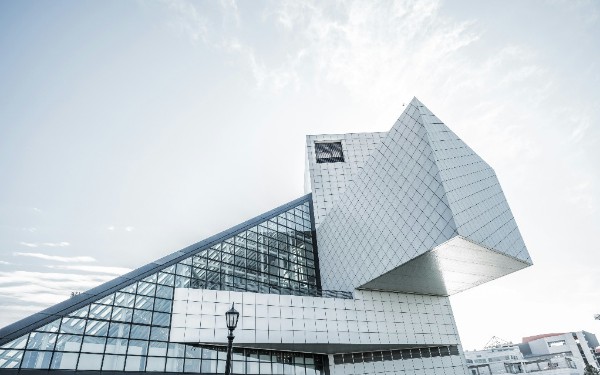 AI Agentic 101: Understanding Artificial Intelligence Agents AI Agentic 101: Understanding Artificial Intelligence Agents Jul 17th 2024, 15:00, by Frederic Jacquet What is agentic AI and how are these autonomous systems revolutionizing industries? How does AI automation of complex tasks improve productivity and facilitate smarter decisions? Why should you need to understand this cutting-edge technology now? The emergence of the term 'Agentic AI' on the internet around 2024 marks a pivotal shift in the discourse on artificial intelligence. |  How To Convert Common Documents to PNG Image Arrays in Java How To Convert Common Documents to PNG Image Arrays in Java Jul 17th 2024, 14:00, by Brian O'Neill In this article, we'll learn how to easily convert a wide variety of common document formats to PNG image arrays using a web API in Java. Before we get to the demonstration portion of this article, we'll first review the common logic behind converting documents to less flexible formats, and we'll ultimately discuss the benefits PNG format offers over other common formats like PDF or JPG. Why Convert Documents To Inflexible Formats? File formats optimized for document editing and manipulation typically aren't optimized for efficiency in other scenarios. There's a long list of arguments to be made in favor of converting such documents to a static format (like PDF) for any scenario other than document editing and manipulation. |  An Introduction to GraphQL: Simplifying Data Fetching With Real-World Examples An Introduction to GraphQL: Simplifying Data Fetching With Real-World Examples Jul 17th 2024, 13:00, by Nitesh Upadhyaya What Is GraphQL? GraphQL is a query language for your APIs, as well as a runtime for fulfilling those queries with your existing data. In simple words, you describe your data using a schema; you ask for only what you want, and in turn, you get predictable results. By leveraging this technology, it empowers the client to request precisely what they require, according to the defined schema and query. People widely use GraphQL as an alternative to the REST API architecture due to its growing popularity. Key Features of GraphQL - Strongly typed schema: GraphQL employs a schema to specify the categories of data that are queryable. This schema functions as a contractual agreement between the client and server, guaranteeing a clear understanding of the requested data and its expected return.
- Single endpoint: GraphQL APIs use a single endpoint for all queries and mutations, unlike REST APIs.
- Hierarchical: GraphQL client queries are similar to the JSON data returned by the API, making it simple and intuitive while making the network API call and understanding complex data structures.
- Client-specified queries: Web or mobile clients have the leverage to specify exactly what they need in terms of data, which reduces the amount of data transferred over the network and improves the overall application performance.
- Real-time capabilities: With GraphQL subscriptions, clients can receive real-time updates to data.
A Simple Example of GraphQL Here is a simple example to demonstrate how GraphQL works. Suppose we have a simple GraphQL server that manages information about books and authors. |  The Invisible Artistry of Backend Development The Invisible Artistry of Backend Development Jul 17th 2024, 12:00, by Thomas Johnson Architecture is often celebrated as a fine art, particularly when a building's aesthetic features stand out. Yet, a beautiful design alone does not guarantee functionality. Architectural design requires a blend of technical precision and artistic vision. The form of a building should directly serve its intended function, illustrating the principle that form should follow function. For example, the Royal Ontario Museum in Toronto, despite its striking appearance, has been criticized as one of the 'worst examples of architecture during the 2000s' due to its impractical interior spaces characterized by awkward corners and slanted walls that compromise usability. |  How To Find and Fix Goroutine Leaks in Go How To Find and Fix Goroutine Leaks in Go Jul 17th 2024, 11:00, by Suleiman Dibirov Goroutines are a key feature of the Go programming language, allowing for efficient concurrent programming. However, improper use of goroutines can lead to leaks, where goroutines are left running indefinitely, consuming memory and other resources. This article will guide you through identifying and fixing goroutine leaks, ensuring your Go applications run smoothly and efficiently. Understanding Goroutine Leaks A goroutine leak occurs when goroutines that are no longer needed are not properly terminated. This can happen due to several reasons: |  Why the Newest LLMs Use a MoE (Mixture of Experts) Architecture Why the Newest LLMs Use a MoE (Mixture of Experts) Architecture Jul 17th 2024, 10:00, by Kevin Vu Specialization Made Necessary A hospital is overcrowded with experts and doctors each with their own specializations, solving unique problems. Surgeons, cardiologists, pediatricians — experts of all kinds join hands to provide care, often collaborating to get the patients the care they need. We can do the same with AI. Mixture of Experts (MoE) architecture in artificial intelligence is defined as a mix or blend of different "expert" models working together to deal with or respond to complex data inputs. When it comes to AI, every expert in an MoE model specializes in a much larger problem — just like every doctor specializes in their medical field. This improves efficiency and increases system efficacy and accuracy. |  How To Change an Ansible Namespace With the FQCN Migration Tool How To Change an Ansible Namespace With the FQCN Migration Tool Jul 17th 2024, 09:00, by Romain Pelisse Packaging Ansible Playbooks within a collection is the best way to distribute reusable automation content. To avoid naming conflicts, developers organize collections inside namespaces. Sometimes situations arise where you need to migrate a collection from one namespace to another, such as a personal or community collection graduating to a more well-known or certified namespace. Altering the namespace can be a tedious task. However, the Fully Qualified Collection Name (FQCN) migration tool simplifies this process by utilizing the fqcn_migration command. Employing a straightforward configuration file transforms an entire collection from one namespace to another. This article introduces the tool and demonstrates how to use it. | |
Comments
Post a Comment